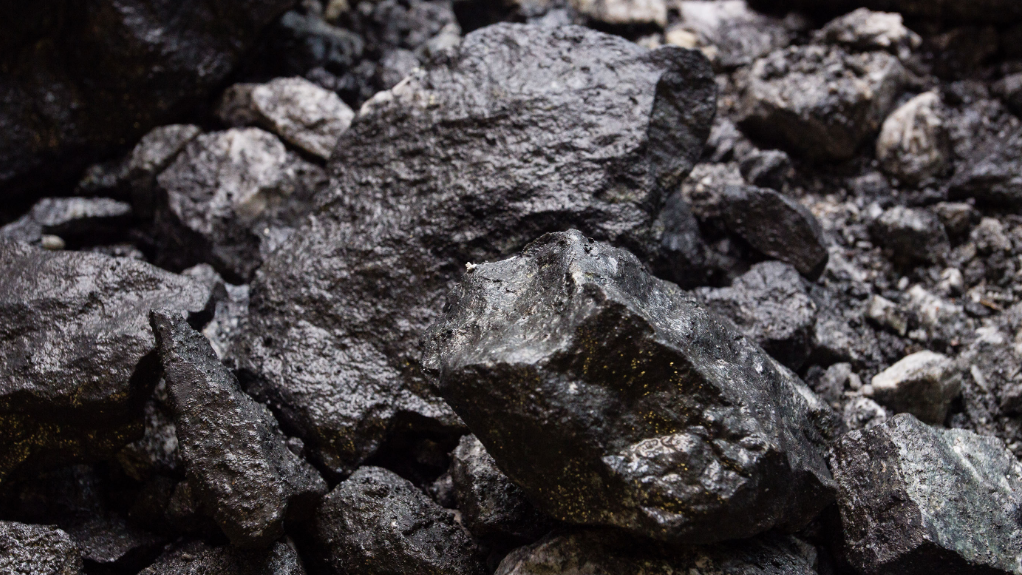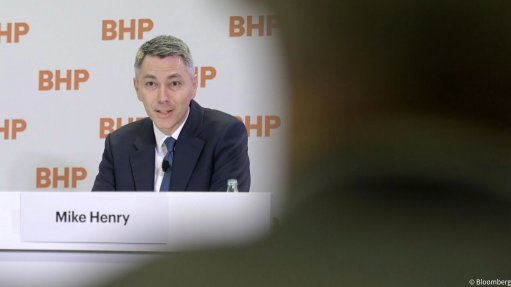Local challenges hinder greener steelmaking



ALL ORE NOTHING Amid declining margins, local industry challenges – such as underinvestment in critical infrastructure and cable theft from rail lines – mean that South African iron-ore miners need to reach an iron-ore price of at least $120/t before exporting
Photo by Adobe Stock
LARA SMITH Clear and consistent policies that promote sustainability, reduce emissions and provide incentives for investment into green steel production can help the industry overcome barriers, thereby driving the energy transition forward
With iron-ore production having declined in South Africa over the past two years, the country faces several challenges that could hinder the realisation of establishing a greener steelmaking industry, says commodities market analyst Core Consultants MD Lara Smith.
Shifting to greener steelmaking processes requires the reduction or elimination of coal use, as well as sourcing a reliable supply of green energy sources, such as green hydrogen, which is produced using renewable energy.
However, South Africa’s significant coal reserves, its existing infrastructure – built around coal-based steel production – and the local steel industry’s heavy reliance on coal as a primary energy source and as a reducing agent in the steelmaking process, means that transitioning to a greener steelmaking industry may not be viable, Smith avers.
In addition, implementing greener steelmaking technologies often comes with higher upfront costs and operational expenses, which may require significant investments in infrastructure, and in research and development.
Hence, the economic viability of greener steelmaking methods, such as using electric arc furnaces or hydrogen-based processes, should be carefully assessed to ensure competitiveness against traditional coal-based methods, she says.
“One needs to consider the opportunities for finance and investments and question whether South Africa is investment grade or investor friendly. This will be core to establishing green steelmaking technologies,” Smith argues.
Shifting to greener steelmaking methods also requires the reskilling of existing workforces to adapt to new technologies and processes, with Smith warning that this transition process can be complex and would thus require comprehensive training programmes and support for workers to ensure a smooth shift to reduce potential job losses.
“Invariably, there will likely be significant job losses, which could have political implications. Union activity could lead to labour unrest and, possibly, looting and countrywide strike action.”
Therefore, she argues that in developing a supportive policy and regulatory framework that encourages and incentivises the adoption of greener steelmaking technologies, clear and consistent policies that promote sustainability, reduce emissions and provide incentives for investment in green steel production can help the industry to overcome such barriers, thereby driving the energy transition forward.
Addressing these challenges will require a multistakeholder approach involving government, the steel industry, research institutions and other relevant stakeholders.
“Long-term planning is necessary to establish a greener steelmaking industry. No transition can begin without the necessary research and development, and an actionable plan,” she adds.
Other Challenges
Smith states that the global iron-ore mining industry’s exuberance has faded on account of China’s property market woes that are weighing on the profitability of local steel mills, thereby causing margins to decline.
Weak margins translate into China demanding more low-grade iron-ore imports, which, in turn, will result in higher iron-ore production levels in China in 2023 and lower import demand overall.
“It will probably not be a fantastic year for iron-ore producers,” Smith expresses.
Amid declining margins, local industry challenges – such as underinvestment in critical infrastructure and cable theft from rail lines – mean that South African iron-ore miners need to reach an iron-ore price of at least $120/t before exporting.
With prices averaging about $105/t, Smith says the additional costs of inland transport and trucking mean that not every mine can use bulk freight rates and port allocation, owing to limited rail capacity.
Therefore, she laments the seemingly “marginal” South African iron-ore production, citing the example of iron-ore mining company Kumba Iron Ore cutting its production outlook for the next three years, owing to logistical constraints.
“Years of underinvestment in critical infrastructure is finally catching up with us. Theft of copper cable from the rail lines has really hobbled the industry,” Smith concludes.
Comments
Press Office
Announcements
What's On
Subscribe to improve your user experience...
Option 1 (equivalent of R125 a month):
Receive a weekly copy of Creamer Media's Engineering News & Mining Weekly magazine
(print copy for those in South Africa and e-magazine for those outside of South Africa)
Receive daily email newsletters
Access to full search results
Access archive of magazine back copies
Access to Projects in Progress
Access to ONE Research Report of your choice in PDF format
Option 2 (equivalent of R375 a month):
All benefits from Option 1
PLUS
Access to Creamer Media's Research Channel Africa for ALL Research Reports, in PDF format, on various industrial and mining sectors
including Electricity; Water; Energy Transition; Hydrogen; Roads, Rail and Ports; Coal; Gold; Platinum; Battery Metals; etc.
Already a subscriber?
Forgotten your password?
Receive weekly copy of Creamer Media's Engineering News & Mining Weekly magazine (print copy for those in South Africa and e-magazine for those outside of South Africa)
➕
Recieve daily email newsletters
➕
Access to full search results
➕
Access archive of magazine back copies
➕
Access to Projects in Progress
➕
Access to ONE Research Report of your choice in PDF format
RESEARCH CHANNEL AFRICA
R4500 (equivalent of R375 a month)
SUBSCRIBEAll benefits from Option 1
➕
Access to Creamer Media's Research Channel Africa for ALL Research Reports on various industrial and mining sectors, in PDF format, including on:
Electricity
➕
Water
➕
Energy Transition
➕
Hydrogen
➕
Roads, Rail and Ports
➕
Coal
➕
Gold
➕
Platinum
➕
Battery Metals
➕
etc.
Receive all benefits from Option 1 or Option 2 delivered to numerous people at your company
➕
Multiple User names and Passwords for simultaneous log-ins
➕
Intranet integration access to all in your organisation




















